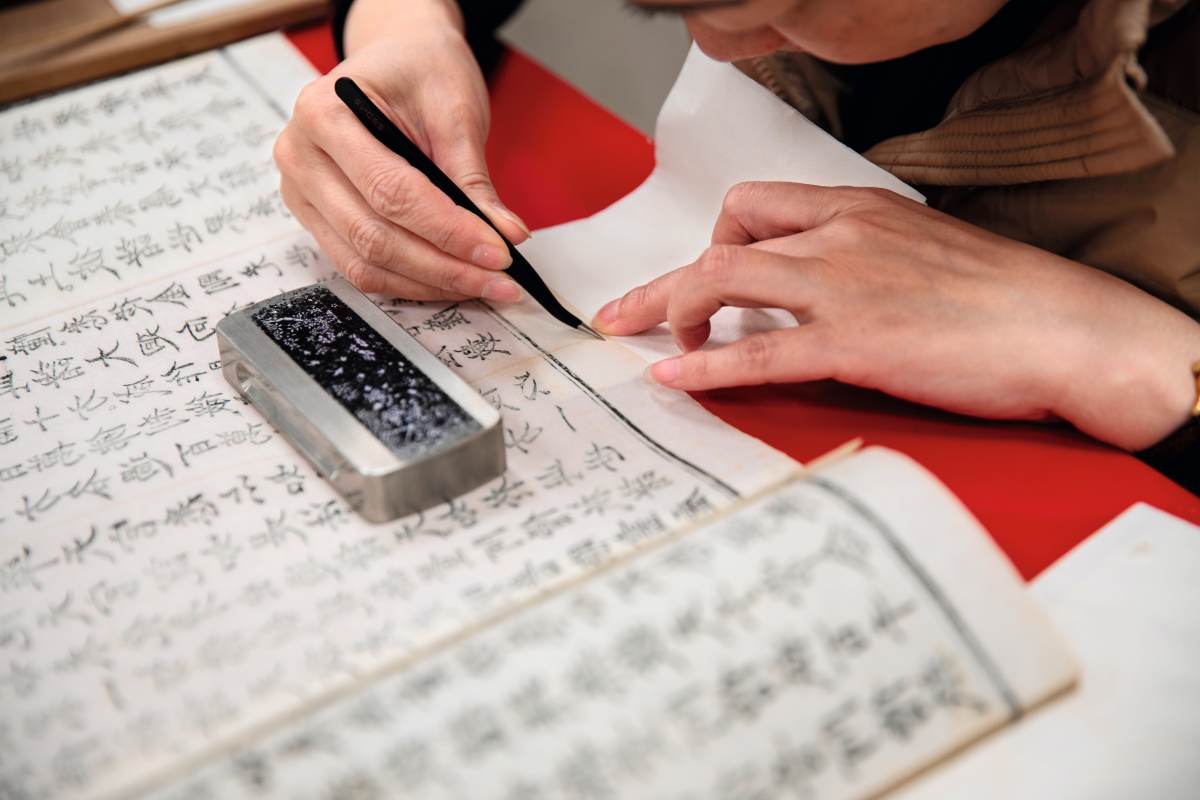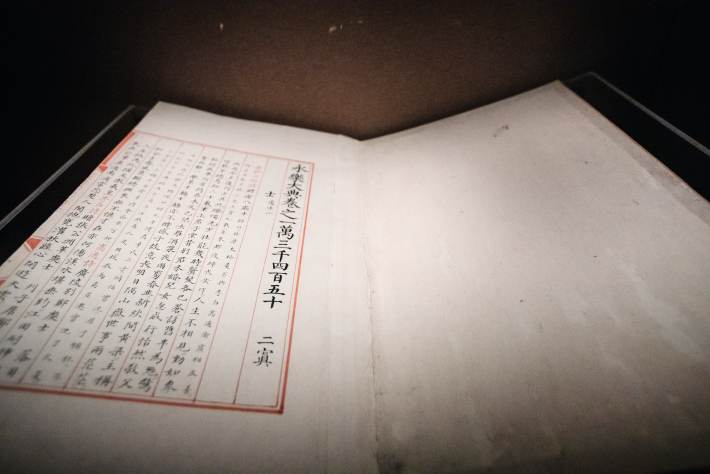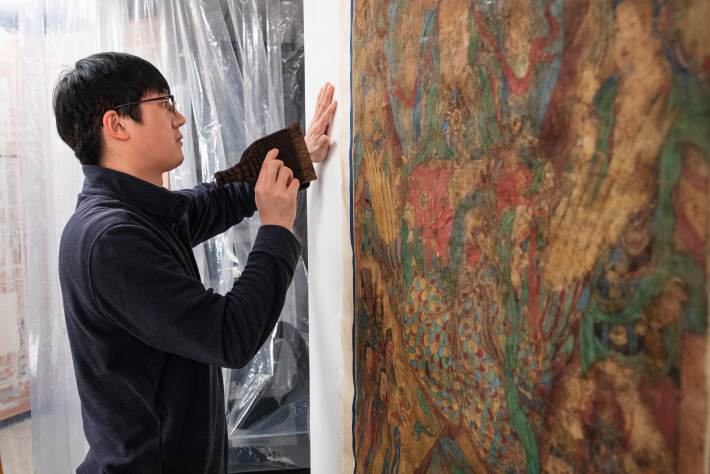Ancient Manuscript Restoration: Mending History

Time seems to slow down in the ancient manuscript restoration studio at the National Library of China (NLC). In the 600-square-meter workshop, 22 ancient manuscript restorers work together like an orchestra, but with only occasional movement and equipment noise, you could hear a pin drop most of the time.
Formulating restoration plans, taking photographs, analyzing tests, cleaning stains and mold, dyeing and creating supplementary paper, repairing book pages and paintings, full-color reconstruction, and restoring original binding are all processes that unfold repeatedly in the studio. Ancient manuscripts from different eras, with diverse binding styles, undergo various restoration techniques to breathe new life into the precious works.

Ancient manuscript restorers carefully peel off the adhesive paper on the back of an ancient painting.
Hu Bo, head of the literature restoration team, was born in 1981 and has been engaged in ancient manuscript restoration for nearly 16 years. He has participated in the restoration of nearly 300 cultural relics and significant ancient manuscripts including the Dunhuang manuscripts and Western Xia (1038-1227) documents.
Today’s ancient manuscript restorers uphold a spirit of craftsmanship, carrying on the traditional art of reviving ancient texts. “Ancient manuscript restoration involves multiple disciplines such as bibliography, art, printing, chemistry, botany, microbiology, papermaking, and textiles. It is far from simple gluing and patching; one must start with practical experience,” he said solemnly. “Although this profession may appear to involve some ‘sewing and patching,’ in essence, it is about preserving the heritage of Chinese culture.”

The restored Yongle Encyclopedia, a massive encyclopedia compiled during the Ming Dynasty(1368-1644) that included many ancient Chinese classics.
Ensuring the safety and quality of restoration is always top priority. Different “ailments” plaguing ancient manuscripts pose unique challenges. Some pages, crumpled into a tight bundle, take an entire day just to flatten. Even a tiny scrap of paper can require meticulous sorting and analysis to be carefully put back in its original place. When choosing restoration paper and achieving the desired coloring effect, they engage in repeated discussions and trials, and even attempt to follow ancient methods to handcraft the paper according to traditional techniques.
Li Yidong was born in 1989 and studied ancient book and painting appraisal at the Central Academy of Fine Arts. After obtaining a master’s degree in 2015, he joined the NLC’s restoration team. Recently, he has been restoring a religious painting depicting Kujaku Myoo from the Ming Dynasty (1368-1644). Every move he makes reflects the meticulousness, patience, and precision of a skilled craftsman. He explained that most religious paintings at that time were done on thin and wide silk and involved painted paper mounts. So, instead of simply peeling off the paper mount, they must carefully fill it with paste to restore the painting to its original state. This was one of the most challenging steps of restoring their most recent works.

Young restorer Song Hui uses electronic devices to conduct component testing on an ancient manuscript.
Young restorer Song Hui noted that some ancient manuscripts had hardened into glued “bricks” due to their age. To tackle this problem, they steamed them carefully in bamboo baskets. Just the process of peeling apart pages could take over a week. “The restoration process for ancient manuscripts is extremely time-consuming, and it requires great patience to do this job,” he said.
Working at a national-level ancient manuscript restoration center, Hu Bo frequently ponders not only the development of the studio but also the mission and future of the industry.

Young restorer Li Yidong restores a Ming Dynasty religious painting depicting Kujaku Myoo.
“The total number of ancient manuscripts restored by the 22 restorers at the NLC each year currently stands at over 2,000 volumes,” he said. “Although it is a significant increase compared to before, it is still too small considering that a third of China’s 30 million volumes of ancient manuscripts are awaiting restoration. Our efforts are still just a drop in the bucket.”
Hu Bo noted that the restoration of ancient manuscripts has gradually evolved into a profession that combines traditional craftsmanship with modern technologies. In recent years, new technologies have rapidly developed, making it possible to develop specialized robotic equipment and utilize robotics and artificial intelligence to assist in ancient manuscript restoration. “The restoration capacity and technological level of our country have reached a relatively advanced stage,” he said. “When young people enter this field, they bring greater knowledge reserves and, combined with the latest technological processes and research equipment, they will undoubtedly make new contributions as a new generation.”